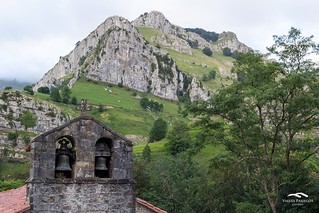CITY COUNCIL
San Roque de Riomiera
Contact
San Roque de Riomiera Town Hall
La Plaza, s/n (La Pedrosa)
39728 San Roque de Riomiera
Phone: 942 539 636
Fax: 942 539 677
Web: www.sanroquederiomiera.es
E-mail: ayto@sanroquederiomiera.com
Share this
From the town of La Concha to Portillo de Lunada, the municipality is one of the best examples of glacier valley in the region. The ice abrasion leave residues in lower altitudes (600 m.). High Miera contrasts due to its glacier circus, moraines, rounded and filed material deposits and riverbeds with the rough river profile down from La Concha.
[MEC id=”1633″]
Municipal website: www.sanroquederiomiera.es
Municipal services: See map
- Archaeological heritage: Covallarco and Cascajosas caves are the main archaeological features in San Roque de Riomera. Covallarco has an old lime furnace and a enclosed structure, a well as bone remains and lithium that prove their prehistoric origins.
- Religious architecture: while being a simple temple from 16th century, the church of San Roque in La Pedrosa is outstanding, as well as the Chapel of Our Lady de los Dolores in Merilla an interesting sanctuary of large dimension built in masonry and covered with lozenge tiles.
- Pas cottage: in Merilla and La Concha there are examples of Pas cottages dating from 17th to 19th centuries. In Bernallán, La Brena, El Coburco, La Lunada and El Toral. The pattern is a rectangular building with two storeys. The top one, the “payo”, is used for grass storage, and the lower one is for stabling. It is built with local materials, such as wooden trusses and irregular masonry. The roof is made of lozenge tiles.
- Industrial heritage: an invaluable Modern Age building, the Resbaladero de Lunada is the most striking icon of industrial heritage in the area. Large scale construction work took place during 18th century and early 19th century due its building, included a masonry sluice in La Concha and the trunk slide built in 1791, located next to the entrance to Lunada. It’s base was almost one kilometre (now disappeared in some parts), above which there was a wooden channel. Its goal was to speed up trunk transportation from higher places. At its feet there was “casa del Rey”, a storage and service building for the slide workers. The slide was included in 2003 in the General Inventory of Cultural Heritage of Cantabria.
- Pas cottages route (8 Km): this medium-difficulty route goes through road, rail and paths from the square of San Roque. The pathway allows to see some of the more than 800 Pas cottages and pastures that are distributed as small neighborhoods scattered throughout the municipality.
- Hiking through Pas peaks (13 Km): starting from La Concha, this itinerary of four hours goes through an intensely karstified zone occupied by “breniza” cottages. The walk continues through the magnificent beech grove of Haza Mina to the peak at the division between Pas and Miera rivers and arriving at Portillo de Ocejo, the only natural route between the valleys.
- San Roque in mountain bike (30 Km): this route starts and finishes in the square of San Roque, going through roads and pathways. Visit Merilla, Carcabal and the division between Miera and Pisueña valleys.





















































